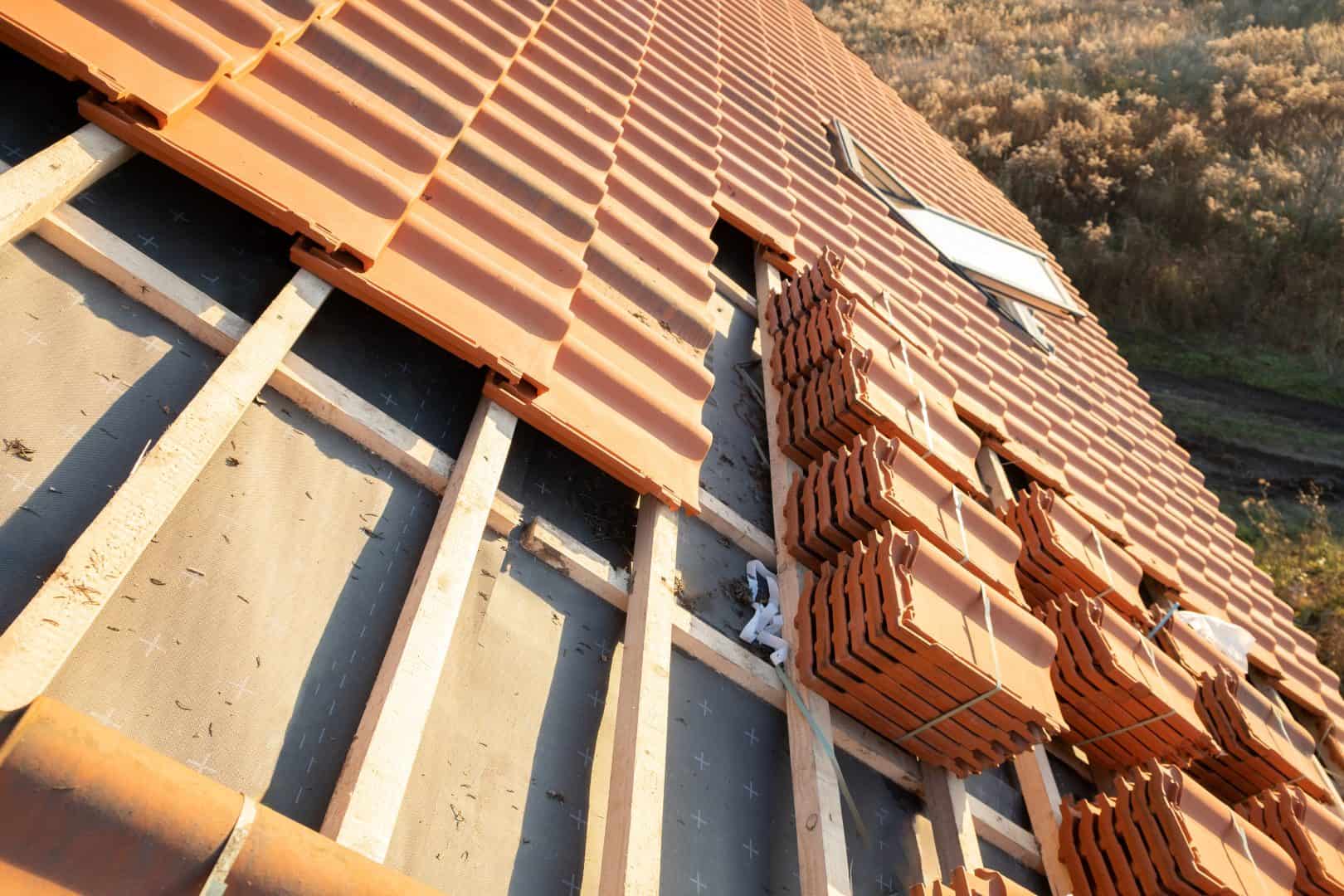How long will my new roof last?
Fill Out The Form And We'll Get Back To You

There’s a lot to consider when determining the lifespan of your new roof, as various factors can influence its durability. From the materials used to the installation quality, your roof’s longevity can vary significantly. In this post, we will research into the key components that affect how long your roof will last, helping you make informed decisions for your home and future investments.
Key Takeaways:
- Material Durability: The lifespan of your roof largely depends on the materials used; for example, asphalt shingles may last 20-30 years, while slate or metal roofs can last 50 years or more.
- Maintenance: Regular inspections and maintenance can significantly extend the lifespan of your roof and prevent premature deterioration.
- Climate Factors: Environmental conditions, such as extreme temperatures, heavy rainfall, or snow, can impact the longevity of your roof materials.
Factors Influencing Roof Lifespan
Your new roof’s lifespan can be affected by several key factors, including:
- Material quality
- Installation practices
- Environmental conditions
Assume that each of these elements plays a significant role in how long your roof will last.
Material Quality
The quality of the materials used for your roof can dramatically impact its longevity. Premium-grade shingles or tiles can withstand the elements better than cheaper alternatives, ultimately prolonging the lifespan of your roof.
Installation Practices
Behind every durable roof is an effective installation. Poorly fitted materials or inadequate attention to detail can lead to leaks and structural issues that may shorten your roof’s lifespan.
In fact, the skill and experience of the roofing contractor you choose play a vital role in ensuring that your roof is installed correctly. A well-executed installation not only helps in preventing immediate problems but can also safeguard your roof against future wear and tear.
Environmental Conditions
Around your area, environmental factors, such as temperature fluctuations, humidity, and exposure to extreme weather, can have a significant impact on roof longevity. Roofs in harsher climates may deteriorate faster than those in milder conditions.
But, even in relatively temperate regions, factors like heavy rainfall or snowfall can wear down roofing materials over time, emphasizing the importance of considering your local weather patterns when evaluating your roof’s expected lifespan.
Common Roof Materials and Their Durability
One of the most important factors in determining how long your new roof will last is the material used. Different roofing materials come with varying lifespans and maintenance needs. Understanding the durability of each option can help you make an informed decision that suits your requirements and budget.
Asphalt Shingles
Materials like asphalt shingles are among the most popular choices for residential roofs due to their affordability and ease of installation. Typically, they last around 20 to 30 years, depending on factors such as climate and maintenance. It’s advisable to consider upgrading to high-quality options that offer better longevity and warranties.
Metal Roofing
After asphalt, metal roofing is another strong contender in terms of durability. With a lifespan of 40 to 70 years, metal roofs can resist severe weather conditions like heavy rain and snow. They also require minimal maintenance, making them a practical option for many homeowners.
Asphalt shingles, although more common, often do not provide the same level of resilience as metal roofing. Metal roofs are designed to reflect heat, which can lead to reduced energy bills while also remaining durable against rust and corrosion. This excellent longevity showcases the value of investing in a metal roof.
Tile and Slate Roofing
Roofing materials such as tile and slate are renowned for their exceptional longevity and robustness. These materials can last from 50 to over 100 years, making them ideal for those looking for a long-term roofing solution. While the upfront costs may be higher, their durability and low maintenance requirements can justify the investment.
Durability is a key selling point for tile and slate roofing. They are fire resistant and can withstand heavy weather, including high winds and hail. Moreover, the aesthetic appeal of these materials often enhances the overall value of your property, making them a worthwhile consideration when planning your new roof.
Maintenance Practices for Extended Roof Life
For ensuring your new roof has a long lifespan, regular maintenance practices are crucial. You should conduct routine inspections and address any minor issues before they escalate. Additionally, keep an eye on your roof’s condition and lifespan by checking resources like What is the average lifespan of a roof? Is it necessary …. This proactive approach will significantly enhance the durability of your roofing system.
Regular Inspections
Above all, conducting regular inspections of your roof is vital. These inspections help you identify potential problems such as missing shingles, leaks, or signs of wear and tear. Scheduling these checks at least twice a year, particularly before and after severe weather seasons, of course, will allow you to maintain your roof’s integrity and avoid costly repairs down the line.
Cleaning and Debris Removal
Extended cleaning and debris removal from your roof can greatly contribute to its longevity. It is important to regularly clear off leaves, branches, and other debris that can trap moisture or cause damage over time.
Another important aspect of cleaning your roof is to remove any moss or algae growth, which can degrade roofing materials. Performing this maintenance helps prevent water pooling and potential leaks. Additionally, ensure that gutters and downspouts are kept clean and free-flowing to direct water away from your roof effectively. Prioritising these cleaning tasks can significantly enhance the lifespan of your roofing system.
Signs Your Roof Needs Replacement
Unlike minor repairs, certain signs indicate that your roof requires full replacement. If you notice sagging, leaks, or extensive wear and tear, it’s crucial to evaluate the situation seriously. An old or damaged roof can lead to further structural issues within your home, making it vital to address any concerns promptly.
Visible Damage
One of the first things you should look for is visible damage to your roof. This can include missing or broken shingles, significant dents, or tiles that are cracked or curled. If the damage is widespread, it may be an indication that your roof is reaching the end of its lifespan.
Age of Roof
With roofs, age plays a significant role in determining whether replacement is necessary. Most roofs come with an estimated lifespan, typically ranging from 20 to 50 years, depending on the material. If your roof is approaching or has exceeded its expected lifespan, it is wise to consult a professional to assess its condition. Be proactive in understanding your roof’s age to prevent unexpected problems.
Roof materials differ in longevity, and it’s important to know what type of roof you have. Asphalt shingles generally last 20-30 years, while metal roofs can last up to 50 years or more. As your roof ages, the likelihood of issues increases; keeping track of its age will help you schedule necessary inspections and replacements in advance. Should you find yourself unsure about the specific lifespan of your roof, a professional inspection can provide valuable insights.
Cost Considerations for Roof Replacement
All aspects of roof replacement carry associated costs that can vary significantly. You may find it helpful to explore community discussions about the longevity of roofs, such as How much life is left in my roof? : r/Roofing, to gauge the financial implications of your decisions. Your budget should encompass materials, labour, and potential additional repairs, ensuring you invest wisely in maintaining the integrity of your home.
Budgeting for a New Roof
Below, it’s crucial to establish a clear budget for your new roof. Consider not just the upfront costs but also the long-term savings on maintenance and energy efficiency. It is wise to consult with experts to obtain detailed estimates that provide transparency and align with your financial capabilities. Documentation of all expenditure will aid in better financial planning.
Return on Investment
Between the initial costs of roof replacement and the long-term benefits, understanding the return on investment (ROI) is vital. A well-installed roof can increase your property’s value, ensuring you see a good return should you decide to sell in the future. Additionally, newer roofing materials often feature improved energy efficiency, translating to lower utility bills over time.
Further, considering the ROI from a new roof entails evaluating its lifespan against your current roof’s condition. A high-quality roof can last for decades, potentially saving you money on repairs and energy costs while enhancing your home’s aesthetic appeal. It’s advisable to think of your new roof as an investment that pays off through increased property value and reduced maintenance costs.
FAQs About Roof Lifespan
Many factors can impact the lifespan of your roof, and it’s natural for you to have questions. You might wonder how different materials affect longevity or if the climate in your area plays a role. Additionally, regular maintenance can significantly enhance your roof’s durability. Understanding these aspects can help you make informed decisions about your roofing needs. Whether you’re simply curious or planning for a future replacement, seeking answers to these FAQs will provide clarity and peace of mind regarding your investment in a new roof.
Summing up
On the whole, the longevity of your new roof depends on various factors including the materials used, local climate conditions, and regular maintenance. While asphalt shingles might last around 20 years, metal roofs can endure for 50 years or more. Conducting regular inspections and addressing any issues promptly will help maximise your roof’s lifespan. Ultimately, with the right care, you can expect your new roof to serve you well for decades, providing protection and value to your home.
Re-Roofing of House
The guys made a fantastic job of replacing the roof recently. They were fast, relaible and efficient. The work was carried out in a double-quick time.
Fascias and Soffits
We employed Wrights Roofs to replace the fascias, soffits and gutters that had been on the house since it was new. They carefully removed and replaced it all. Really impressed.
New Roof
We had an extension built and Wrights came and put a new roof on. They were excellent, no fuss, great value for money. Thank you.
Roofs, Flat Roofs Chimneys and Solar Panels
If you need roof work on your home, please complete the form or call us today.

